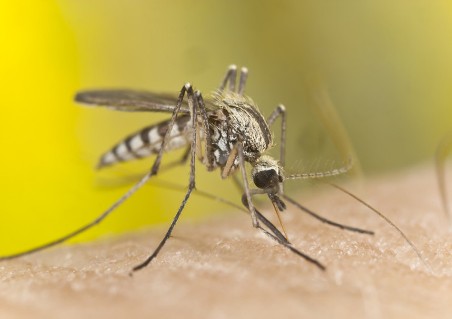How malaria-carrying species of mosquitoes are related to each other
 Washington, Nov 28 : A new study has provided a deeper insight into how these malaria-carrying species of mosquitoes are related to each other.
Washington, Nov 28 : A new study has provided a deeper insight into how these malaria-carrying species of mosquitoes are related to each other.
Nora Besansky, O'Hara Professor of Biological Sciences at the University of Notre Dame and a member of the University's Eck Institute for Global Health, has led an international team of scientists in sequencing the genomes of 16 Anopheles mosquito species from around the world.
Anopheles mosquitoes are responsible for transmitting human malaria parasites that cause an estimated 200 million cases and more than 600 thousand deaths each year. However, of the almost 500 different Anopheles species, only a few dozen can carry the parasite and only a handful of species are responsible for the vast majority of transmissions.
Besansky and her fellow researchers investigated the genetic differences between the deadly parasite-transmitting species and their harmless (but still annoying) cousins.
The research described detailed genomic comparisons of these mosquitoes and the deadliest of them all, Anopheles gambiae.
These results also offer new insights into how the dynamic evolution of their genomes might contribute to their flexibility to adapt to new environments and to seek out human blood.
Malaria parasites are transmitted to humans by only a few dozen of the many hundreds of species of Anopheles mosquitoes, and of these, only a handful are highly efficient disease-vectors. Thus, although about half the world's human population is at risk of malaria, most fatalities occur in sub-Saharan Africa, home of the major vector species, Anopheles gambiae.
Variation in the ability of different Anopheles species to transmit malaria known as, "vectorial capacity," are determined by many factors, including feeding and breeding preferences, as well as their immune responses to infections.
Examining gene evolution across the Anopheles revealed high rates of gene gain and loss, about five times higher than in fruit flies. Some genes, such as those involved in reproduction or those that encode proteins secreted into the mosquito saliva, have very high rates of sequence evolution and are only found in subsets of the most closely-related species.
The newly available genome sequences also provided conclusive evidence of the true relations amongst several species that are very closely related to Anopheles gambiae but nevertheless show quite different traits that affect their vectorial capacity.
This study substantially improves the understanding of the process of gene flow between closely related species, a process believed to have occurred from Neanderthals to the ancestors of modern humans, and how it might affect the evolution of common and distinct biological characteristics of mosquitoes such as ecological flexibility and vectorial capacity.
Two papers published are published in the Science Express.(ANI)